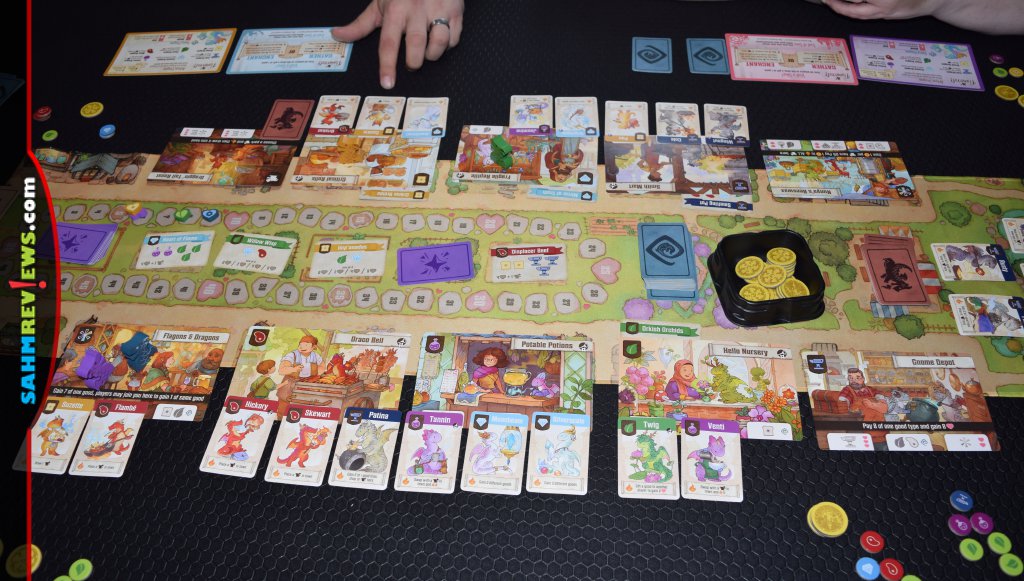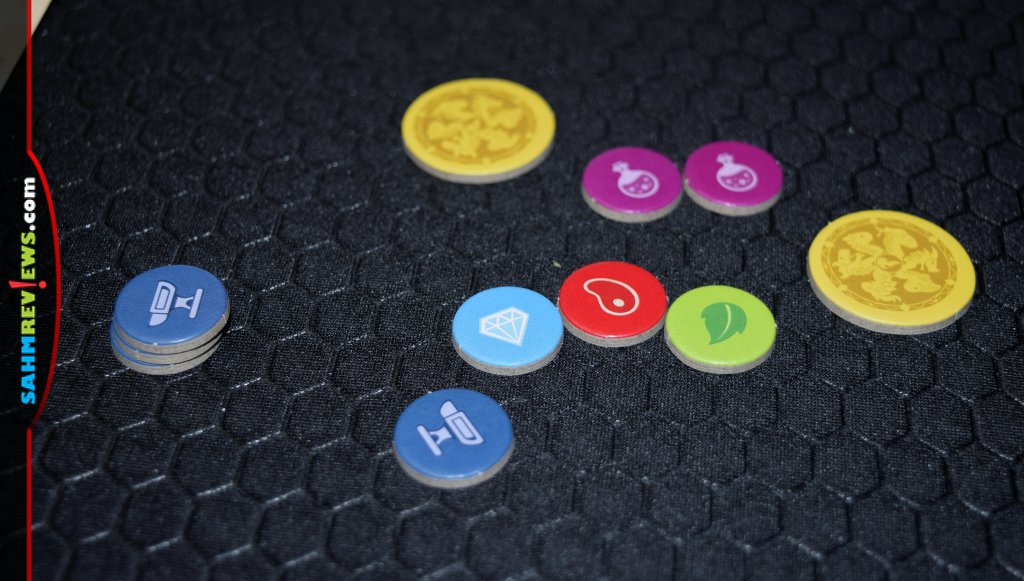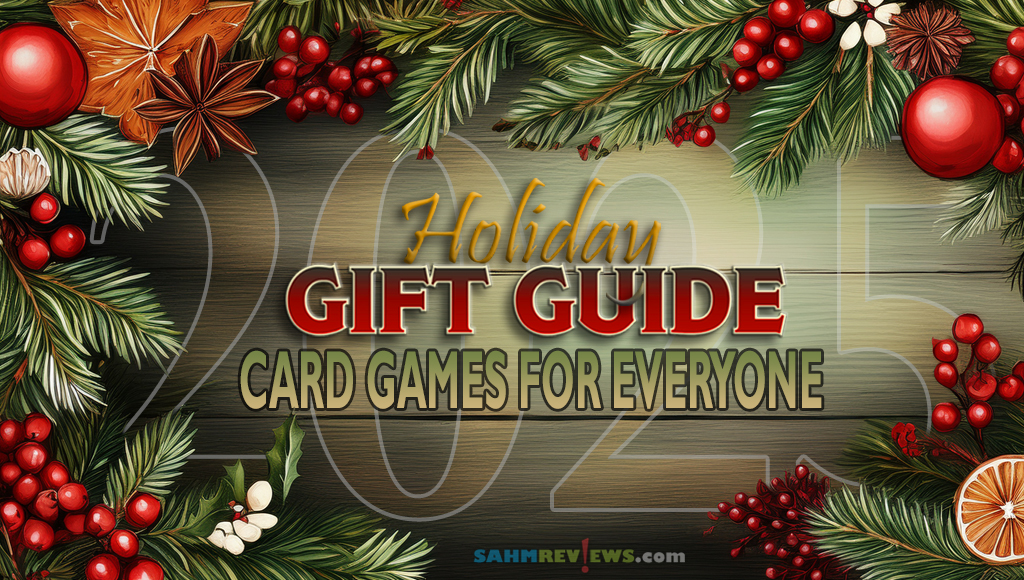Flamecraft Board Game Overview

Every year we learn about a lot of different games. With an astounding number of new games released in each calendar year (upwards of 3,500), it’s hard to filter through the noise. That’s in addition to ones that carry over from prior years that are still in the cycle and evergreen products that sell for many years. No doubt there are a lot to choose from and a lot to hear about. Some that stand out this year are boop., Frosthaven and Flamecraft, all three that naturally have been included in our annual holiday gift guides.
This weekend during our regular game day with friends, we had a chance to play Flamecraft from Lucky Duck Games. While the version with the deluxe components definitely scores higher marks for adorable pieces, this version did not disappoint.

If you look at the setup photo, it looks like there’s a lot going on, but really it’s pretty easy. First, decide if you’re playing a basic game or a more advanced one. It will slightly alter the setup, but not much. For the sake of simplicity, I’m just explaining the base setup but also talk a bit about each component as I run through the setup details. Roll out the “board” and give each player a dragon token with matching player aid. Six starter shops are added to the board then an additional pool is created from the remainder. This variable setup of shops means each game is slightly different. Player reputation tokens are placed on the reputation (scoring) track.

The starter dragons are placed on their corresponding shop and the remainder of the artisan dragon deck is shuffled and set on the designated space on the board. Five are added to the park space on the board and each player is given three. These “artisan” dragons are essentially the currency because you need them to be able to do anything in the game. The “fancy dragons” on the other hand offer in-game or end of game scoring bonuses. Players will each receive two, select one and return the other to the stack which also has a special place by the wishing well. Enchantment cards are shuffled with five revealed face up for all to see. These are basically recipe cards that can be fulfilled for additional in-game points.

Coins are piled on the well in the center of the board. Goods tokens don’t have a space on the board, but instead are placed in a general supply at the end. We opted to use the two-compartment X-Trayz to keep everything organized. They come in orange, black and white as divided or single bin. These goods are what will be needed to complete the enchantments (recipes) so all players will be regularly collecting or turning them in. Without the trays, it might get a bit messy.

During a player’s turn, they can do one of two things: Gather (collect goods and do other things) or Enchant (turn in a completed recipe). Most of the action takes place when visiting the shops (gathering). You may select any other market stall to visit besides the one you are currently on. There are six to start, each with three slots for dragons to be placed. When all three slots are filled, another shop will be queued and open during the next player’s turn. When you arrive at a shop, you look at all the icons in the upper left of the shop and each subsequent card. Those are the goods you’ll collect.
The second step of the Gather option is to place a dragon. If you have one in your hand that matches an open slot in the shop you’re in, you may add it and take the corresponding bonus on the board (not the card).

You may then activate the ability of one of the dragons in that shop. There are an assortment of options including gaining goods, drawing a new dragon, placing a dragon anywhere in the town or swapping the placement of existing ones. If the shop has an ability, you may then utilize it. These vary from shop to shop and due to the variable setup will change from game to game.

As an alternative, you can cast one Enchantment. To do this, you need to go to the shop that matches the card you want to complete. Any time during the game that you want to move to a space where an opponent is standing, you may. You just have to pay them one good in order to do so. When visiting a shop for an Enchantment, you don’t get to collect the displayed goods. Once you’ve turned in the required goods on the Enchantment card you chose, take the noted reward. The Enchantment card is then tucked under the shop card and will award an extra good on future visits. Before finishing your turn, you get to activate all the dragons in that shop.

Throughout the game, you should keep tabs on your Fancy Dragons. If you meet the requirements during the game, you can turn them in for the designated bonus. Others will be turned in at the end of the game.
The end of the game is triggered when the last card is revealed from either the Enchantment deck or the Artisan deck. Each player, including the person who triggers it, gets one final turn. The game is very family-friendly with cute images and hilarious names. Since players aren’t restricted from going to shops where others are, it isn’t a “take that” kind of game either. It only took one time playing to understand why Flamecraft is getting so much buzz. Ask your local game store about availability, but you can also purchase direct from Lucky Duck Games or watch for it on Amazon. Lucky Duck Games continues to grow both domestically and globally so keep your eyes on their social channels (Facebook, Twitter, Instagram) to see all the exciting news!
Have you heard anything about Flamecraft?



1 thought on “Flamecraft Board Game Overview”